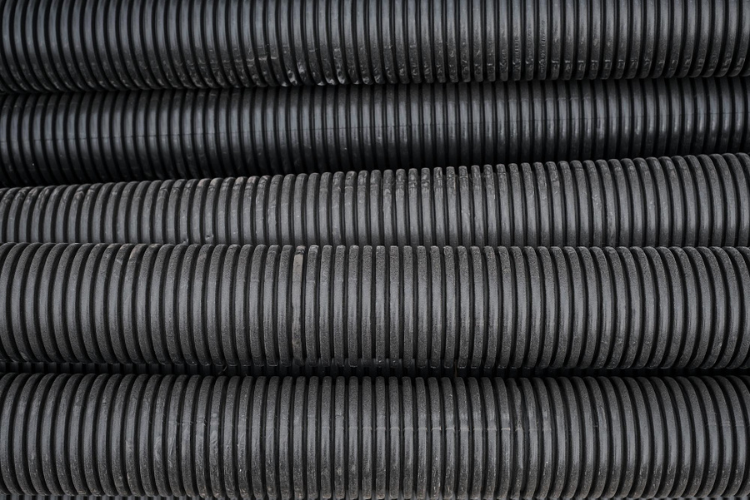Table Of Contents
- How To Choose Right Evaporator Coil: Understanding Its Role In Industrial Processes
- The Functionality
- Key Factors To Consider When Selecting An Evaporator Coil
- The Impact Of Material And Design On Evaporator Coil Performance
- Maintenance And Longevity: Ensuring Your Evaporator Coil Stands The Test Of Time
- Navigating The Market: Where To Find Reliable Evaporator Coil Manufacturers And Suppliers
Choosing the Right Evaporator Coil for Your Industrial Process
So here’s the thing: when you’re running any kind of industrial setup—food storage, HVAC in a massive building, or even chemical plants—you’ve got to get heat transfer right. And that usually means dealing with evaporator coils.
These guys don’t look like much, just a bunch of tubes and fins, but without them? Forget about efficiency. They take liquid, absorb heat, and turn it into gas. Done right, they keep everything running smoothly.
Done wrong… well, you’ll be calling maintenance a lot. Picking the right coil isn’t exactly glamorous, but trust me, it matters. So, how to choose right evaporator coil?
How To Choose Right Evaporator Coil: Understanding Its Role In Industrial Processes
Evaporator coils are basically the unsung heroes of cooling systems. They let refrigerant evaporate and soak up heat from whatever process is going on.
Think warehouses stacked with frozen goods or a pharmaceutical lab where temp control is literally non-negotiable. No coil, no cooling. Period.
What’s nice now is that you can find a ton of evaporator coils for sale online—scroll through catalogs, zoom in on specs, and get quotes. Makes it easier than having to chase down every vendor in person.
Design is where things start to get interesting. More surface area on those tubes = more heat transfer. Copper tends to be the go-to because it conducts heat like a champ, but it’s not always the best choice if your environment eats metal for breakfast.
And don’t ignore energy use either. The wrong coil can drag your electricity bill through the roof, while the right one saves you cash month after month.
The Functionality
Evaporator coils hold chilled refrigerant, which can move through the compressor. The air moves away from the coil through the blower fans, and the cooling effect increases rapidly. It is the heat pump that helps reverse the process.
It expels the heat into the home through the coil and does not take it in. Also, because of this, it creates a warm environment inside your home. In the majority of cases, heat pumps have an auxiliary heating element.
It is a part of the evaporator coil and helps supplement heat. This happens when the temperature falls beneath a particular threshold point.
Key Factors To Consider When Selecting An Evaporator Coil
How to choose right evaporator coil? What should you consider? First off: cooling capacity. How much heat do you actually need removed per hour? That number’s basically the foundation. If the coil can’t handle it, nothing else matters.
Then there’s the refrigerant itself. Different refrigerants have their own pressure and temperature quirks.
If your coil isn’t matched to those quirks, you’re looking at leaks, breakdowns, or a system that constantly underperforms. And don’t forget the messy details—flow rates, corrosive fluids, weird contaminants—they all factor in.
And yeah, money always comes into it. The upfront price tag is one thing, but long-term costs—maintenance, repairs, replacements—are the part most people regret not considering. That “cheap” coil? It could cost you double later.
The Impact Of Material And Design On Evaporator Coil Performance
Copper’s the popular kid in the room—great heat transfer, easy to work with. But sometimes you need stainless steel or even titanium, especially if you’re worried about corrosion.
More expensive, but it might be the difference between replacing a coil every couple of years versus every decade.
Design tweaks make a real difference, too. The fins? Not just decoration. More fins mean better heat transfer. Tube layout affects how the refrigerant actually moves through. Some manufacturers even play with fin patterns to squeeze out extra efficiency.
One catch a lot of folks miss—compatibility with refrigerants. With environmental laws changing, the refrigerant you use today might not be legal tomorrow. A coil that can handle multiple options? Future-proofs you a bit.
Also, don’t underestimate manufacturing quality. Precision bends, careful welding—those small details are what keep an industrial coil from cracking under pressure.
Maintenance And Longevity: Ensuring Your Evaporator Coil Stands The Test Of Time
Here’s the part nobody loves: maintenance. But if you skip it, you pay later. Coils collect dirt, dust, and even corrosion. That kills heat transfer. Cleaning them out regularly and checking for buildup is boring work, sure, but it saves money.
Refrigerant levels are another thing. A leak might not sound like a big deal at first—until cooling capacity drops and suddenly you’re scrambling. Plus, it’s an environmental hazard. Catch it early, you’re fine. Miss it, you’re looking at repairs.
Installation is huge too. A poorly installed coil is basically doomed from day one. Double-checking after install, making sure it’s running inside its limits, saves a lot of future headaches.
Higher-end coils with tougher materials and smart designs usually last longer and need fewer fixes. They might make you wince at the price upfront, but in five years, you’ll be glad you didn’t cheap out.
Navigating The Market: Where To Find Reliable Evaporator Coil Manufacturers And Suppliers
How to choose right evaporator coil? Finding a solid supplier isn’t just about clicking “buy now.” Good manufacturers know which designs fit which industries. They’ve seen failures before and can steer you toward what actually works.
Certifications—ISO, ASHRAE, that sort of thing—aren’t just red tape. They’re a quick way of telling if the supplier holds their coils to a real standard.
Sure, online catalogs are handy. You can browse, download specs, and compare prices. But don’t write off trade shows or in-person visits. Talking directly to reps gives you a clearer picture of what they can deliver and sometimes even gets you custom tweaks you won’t find on the site.
At the end of the day, picking the right evaporator coil isn’t just about grabbing whatever’s available.
It’s matching the coil to your process, factoring in energy savings, and making sure the supplier has your back. Get those pieces lined up, and your system runs longer, smoother, cheaper. Mess it up… and you’ll definitely feel it in downtime and repair bills.














